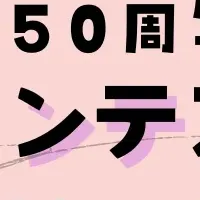
Reviving Ancient Heritage: Dunhuang's Cultural Journey for the Youth
Dunhuang, a city steeped in over a thousand years of cultural heritage, is experiencing a renaissance driven by the enthusiastic energy of its youth. This remarkable collaboration pairs traditional legacies with modern creativity, making history relevant to today’s generation. Recently, I participated in a captivating music drama titled 'The Summoning of Dunhuang' at the National Theatre of China (NTC), which effectively showcased how ancient themes can resonate in contemporary settings. My own experience with Dunhuang began back in 2021 when I penned a song entitled 'Feitian' (Flying Apsaras). This endeavor aimed to reinterpret the essence of Dunhuang’s exquisite murals using a pop music style. To my joy, the response, particularly from young listeners, was overwhelmingly positive. Many expressed that it marked the first time they had engaged with Dunhuang's art and history. This reaction underscored an urgent need to create accessible “entry points” into China’s traditional cultural narratives.
The fundamental belief I hold is that cultural inheritance must begin in the heart. It needs to be presented in ways that feel familiar and personal—a necessity for inviting today’s youth into conversations surrounding heritage. Young audiences need to see themselves in these stories; they must feel a connection that sparks excitement and engagement. Achieving this is crucial for breathing life back into ancient traditions.
My belief led me to take on roles in 'The Summoning of Dunhuang' where I embody two characters: Chang Shuhong, the trailblasing founder of the Dunhuang Academy, set in 1935, and Zhang Ran, a digital preservation engineer from 2035. Chang dedicates himself to safeguarding the cultural legacy of Dunhuang after traveling from Paris to the remote deserts of Northwest China. In contrast, Zhang applies modern technology to revive and animate the murals. The juxtaposition of these characters, separated by a century yet united in their mission, illustrates how guardianship of heritage can take many forms.
To prepare for this drama, our creative team embarked on an intensive field study in Dunhuang. This journey allowed us to immerse ourselves in history, feeling the air shift as we turned the pages of ancient chapters. The echoes of past events, though worn by time, resonate through the sounds of caravan bells and the music of traditional flutes, bringing a palpable sense of the divine to the present.
As NTC Director Tian Qinxin frequently reminds us, “Dunhuang’s soul is in the details.” To permit our dancers to embody the soft grace of the flying apsaras, we meticulously examined each detail of the murals, studying how the figures gracefully sweep their arms through the air. Our lighting designer undertook extensive testing to replicate how sunlight once danced on cave walls. With the arrival of a 15-meter tall digital projection of a Buddha, juxtaposed with a flying apsara descending from above, we effectively merge tradition and modernity, creating a seamless experience designed to stir deep emotions in our audience.
During performances, I often witnessed the transformative power of our work through the audience’s reactions. Theatergoers would illuminate with excitement, claiming to have seen, “a Dunhuang for my generation.” Students from a school for the deaf expressed their gratitude through sign language, conveying heartfelt appreciation for the show. Many took to social media, expressing their inspired desire to explore Dunhuang further, or to delve into Chang's inspiring history. These moments reinforce my conviction that reviving traditional culture isn’t about mere entertainment. Rather, it’s about infusing it with sincerity, creativity, and passion—bringing ancient traditions down from the shelves of history into the vibrant contexts of contemporary life.
The vitality of traditional culture today can be attributed to its rich historical context, while its future lies in employing innovative forms of expression to keep it alive. In a memorable visit in August 2019, Chinese President Xi Jinping emphasized that protecting the Mogao Caves and fostering Dunhuang culture is a collective responsibility for the advancement of global civilization. Dunhuang continues to resonate with the youth, and for us as artists and cultural stewards, it serves as a relay race across time.
As I journey nationally with 'The Summoning of Dunhuang,' I increasingly recognize the depth and breadth of Chinese civilization. The story of Dunhuang continues to unfold. I look forward to sharing the moving tales of this extraordinary heritage, as I contribute my voice in the ever-expanding narrative of our cultural legacy.
The fundamental belief I hold is that cultural inheritance must begin in the heart. It needs to be presented in ways that feel familiar and personal—a necessity for inviting today’s youth into conversations surrounding heritage. Young audiences need to see themselves in these stories; they must feel a connection that sparks excitement and engagement. Achieving this is crucial for breathing life back into ancient traditions.
My belief led me to take on roles in 'The Summoning of Dunhuang' where I embody two characters: Chang Shuhong, the trailblasing founder of the Dunhuang Academy, set in 1935, and Zhang Ran, a digital preservation engineer from 2035. Chang dedicates himself to safeguarding the cultural legacy of Dunhuang after traveling from Paris to the remote deserts of Northwest China. In contrast, Zhang applies modern technology to revive and animate the murals. The juxtaposition of these characters, separated by a century yet united in their mission, illustrates how guardianship of heritage can take many forms.
To prepare for this drama, our creative team embarked on an intensive field study in Dunhuang. This journey allowed us to immerse ourselves in history, feeling the air shift as we turned the pages of ancient chapters. The echoes of past events, though worn by time, resonate through the sounds of caravan bells and the music of traditional flutes, bringing a palpable sense of the divine to the present.
As NTC Director Tian Qinxin frequently reminds us, “Dunhuang’s soul is in the details.” To permit our dancers to embody the soft grace of the flying apsaras, we meticulously examined each detail of the murals, studying how the figures gracefully sweep their arms through the air. Our lighting designer undertook extensive testing to replicate how sunlight once danced on cave walls. With the arrival of a 15-meter tall digital projection of a Buddha, juxtaposed with a flying apsara descending from above, we effectively merge tradition and modernity, creating a seamless experience designed to stir deep emotions in our audience.
During performances, I often witnessed the transformative power of our work through the audience’s reactions. Theatergoers would illuminate with excitement, claiming to have seen, “a Dunhuang for my generation.” Students from a school for the deaf expressed their gratitude through sign language, conveying heartfelt appreciation for the show. Many took to social media, expressing their inspired desire to explore Dunhuang further, or to delve into Chang's inspiring history. These moments reinforce my conviction that reviving traditional culture isn’t about mere entertainment. Rather, it’s about infusing it with sincerity, creativity, and passion—bringing ancient traditions down from the shelves of history into the vibrant contexts of contemporary life.
The vitality of traditional culture today can be attributed to its rich historical context, while its future lies in employing innovative forms of expression to keep it alive. In a memorable visit in August 2019, Chinese President Xi Jinping emphasized that protecting the Mogao Caves and fostering Dunhuang culture is a collective responsibility for the advancement of global civilization. Dunhuang continues to resonate with the youth, and for us as artists and cultural stewards, it serves as a relay race across time.
As I journey nationally with 'The Summoning of Dunhuang,' I increasingly recognize the depth and breadth of Chinese civilization. The story of Dunhuang continues to unfold. I look forward to sharing the moving tales of this extraordinary heritage, as I contribute my voice in the ever-expanding narrative of our cultural legacy.
Topics Entertainment & Media)

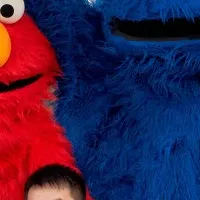
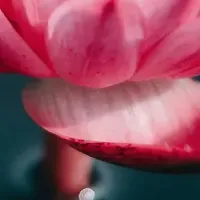


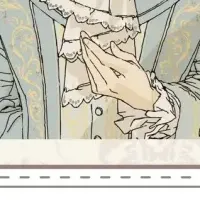



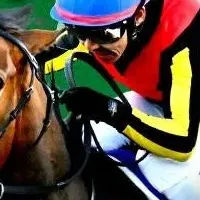
【About Using Articles】
You can freely use the title and article content by linking to the page where the article is posted.
※ Images cannot be used.
【About Links】
Links are free to use.